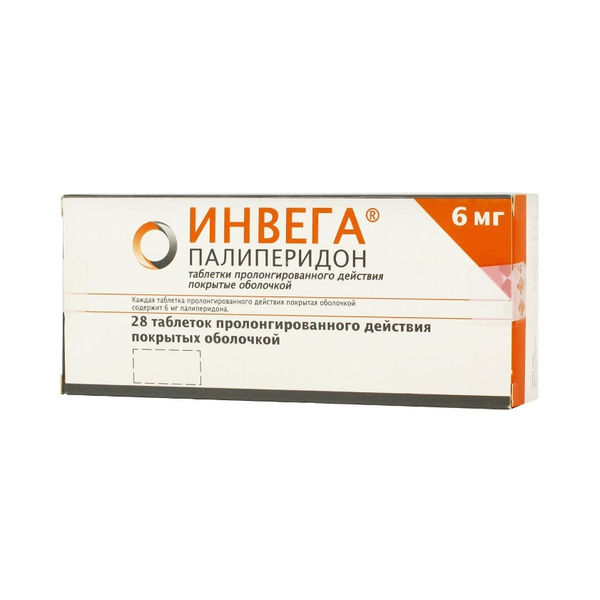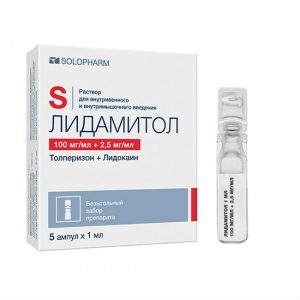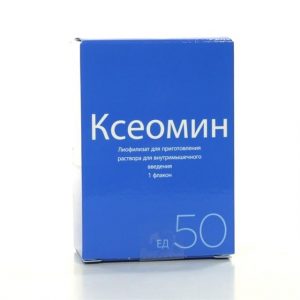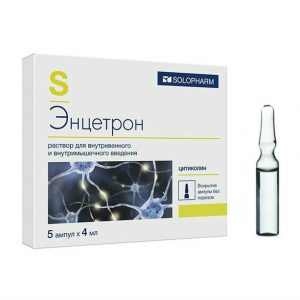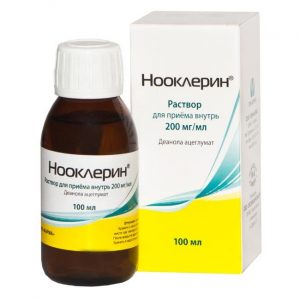Description
Packaging
28 pcs
Indications
schizophrenia, incl. in the exacerbation phase in adult
patients, prevention of exacerbations of schizophrenia in adults
treatment of schizophrenia in adolescents aged 12 to 17 years old
treatment of schizoaffective disorders: as monotherapy or as part of combination therapy with antidepressants and / or normotics in adult patients.
Contraindications
Contraindicated in patients with hypersensitivity to paliperidone, risperidone, as well as any auxiliary ingredient of the drug.
Caution: a history of seizures and medical conditions that lower the seizure threshold. Like other antipsychotics, paliperidone should be used with caution in patients with a history of seizures or other diseases that lower the threshold for seizure readiness.
Dysphagia and narrowing of the lumen of the gastrointestinal tract (possibility of obstruction). Invega ® tablets do not deform and almost do not change their shape in the digestive tract, and therefore they should not be prescribed to patients with severe narrowing of the lumen of the gastrointestinal tract (pathological or iatrogenic), as well as to patients who suffer from dysphagia or who have difficulty swallowing tablets. There are rare reports of gastrointestinal obstruction symptoms associated with ingestion of non-deformable dosage forms with controlled release of the active substance. Paliperidone also belongs to such dosage forms, and therefore it can be prescribed only to those patients who can swallow tablets whole.
Elderly patients with dementia. The efficacy and safety of paliperidone was not evaluated in elderly patients with dementia. A meta-analysis of 17 placebo-controlled studies showed that elderly patients with dementia treated with atypical antipsychotic drugs such as risperidone, aripiprazole, olanzapine and quetiapine had a higher mortality rate compared with patients receiving placebo. Placebo-controlled studies in which elderly patients with dementia participated, demonstrated an increased frequency of cerebrovascular adverse effects (strokes and transient ischemic attacks), including fatal in patients receiving some atypical antipsychotic drugs, including risperidone, aripiprazole and olanzapine, compared with patients who received placebo.
Parkinson’s disease and dementia with Levi bodies. Doctors should carefully consider the possible risks and potential benefits when prescribing antipsychotic drugs, including paliperidone, to patients suffering from Parkinson’s disease or dementia with Levy bodies, since such patients may have an increased risk of developing malignant antipsychotic syndrome (ANS) or increased sensitivity to antipsychotic drugs. Manifestations of this hypersensitivity include, in addition to extrapyramidal symptoms, confusion, dull reactions and postural hypotension with frequent falls.
Pregnancy and lactation
There is currently no data on the safety of paliperidone during pregnancy in women and its effect on fetal development. The drug should not be prescribed during pregnancy, except in cases of emergency from a clinical point of view. The effect of paliperidone on labor in women is not known.
The use of antipsychotic drugs in the third trimester of pregnancy was accompanied by reversible extrapyramidal symptoms in newborns.
Paliperidone is excreted in breast milk, therefore, the drug should not be prescribed during lactation.
Special instructions
zns. It is known that antipsychotic drugs, including paliperidone, can cause central nervous system, which is characterized by hyperthermia, muscle stiffness, instability of the autonomic nervous system function, depression of consciousness, as well as an increase in serum CPK concentrations. Myoglobinuria (rhabdomyolysis) and acute renal failure may also occur in patients with ZNS. If the patient has objective or subjective symptoms of ZNS, all antipsychotic drugs, including paliperidone, must be immediately withdrawn.
tardive dyskinesia. Drugs that have the properties of dopamine receptor antagonists can cause tardive dyskinesia, which is characterized by rhythmic involuntary movements, mainly of the tongue and / or facial muscles. If the patient has objective or subjective symptoms indicating tardive dyskinesia, it is necessary to consider the advisability of discontinuing all antipsychotic drugs, including paliperidone.
QT interval lengthening. As with other antipsychotics, caution should be exercised when prescribing Invega ® to patients with a history of cardiac arrhythmias, congenital lengthening of the QT interval and combined use with drugs that extend the QT interval.
Hyperglycemia and diabetes. During treatment with Invega ®, hyperglycemia, diabetes mellitus and exacerbation of existing diabetes mellitus were observed. Establishing the relationship between the use of atypical antipsychotic drugs and impaired glucose metabolism is complicated by an increased risk of developing diabetes in patients with schizophrenia and the prevalence of diabetes in the general population. Given these factors, the relationship between the use of atypical antipsychotic drugs and the development of side effects associated with hyperglycemia has not been fully established. Patients with an established diagnosis of diabetes should regularly monitor glucose levels. Patients with risk factors for developing diabetes mellitus (e.g. obesity, a family history of diabetes) should undergo fasting glucose monitoring at the beginning of treatment and periodically during treatment. All patients should be clinically monitored for symptoms of hyperglycemia and diabetes. Patients who develop symptoms of hyperglycemia during treatment with atypical antipsychotics should undergo blood glucose control. In some cases, the symptoms of hyperglycemia disappeared when you stop taking atypical antipsychotic drugs, but for some patients you need antidiabetic treatment, despite stopping the drug.
Weight gain. During treatment with atypical antipsychotics, a significant increase in body weight was observed. It is necessary to control the body weight of patients.
Hyperprolactinemia. Like other antagonists of D2-dopamine receptors, paliperidone increases prolactin levels, and this increase persists throughout the course of taking the drug. The effect of paliperidone is comparable to that of risperidone, the drug that has the greatest effect on prolactin levels among other antipsychotic drugs. Hyperprolactinemia, regardless of the etiology, can suppress the expression of GnRH of the hypotolamus, which leads to a decrease in the secretion of gonadotropins by the pituitary gland. This, in turn, can suppress reproductive function, weakening sexual steroidogenesis in women and men. In patients taking drugs that increase prolactin levels, galactorrhea, amenorrhea, gynecomastia and impotence. Prolonged hyperprolactinemia associated with hypogonadism can lead to a decrease in bone density in women and men.
In vitro tissue culture studies have shown that approximately one third of human breast cancers are prolactin-dependent. This should be considered when prescribing drugs that increase prolactin levels in patients with previously diagnosed breast cancer. Clinical and epidemiological studies conducted to date have not shown a connection between the intake of atypical antipsychotic drugs and the formation of tumors in humans. However, the available data are too limited to draw definitive conclusions.
Orthostatic hypotension. Paliperidone has -Blocking activity, and therefore may cause orthostatic hypotension in some patients. Paliperidone should be used with caution in patients with cardiovascular diseases (e.g. heart failure, myocardial infarction or myocardial ischemia, cardiac muscle conduction disturbances), cerebrovascular diseases, as well as with conditions that contribute to arterial hypotension (e.g. dehydration, hypovolemia and antihypertensive therapy).
Regulation of body temperature. Antipsychotic drugs are attributed to such an undesirable effect as a violation of the body’s ability to regulate temperature. Caution must be exercised when prescribing paliperidone to patients with conditions that may contribute to an increase in internal body temperature, these include intense physical activity, dehydration, exposure to high external temperatures or the simultaneous use of drugs with anticholinergic activity.
Antiemetic effect. In preclinical studies, the antiemetic effect of paliperidone has been identified. This effect, if it occurs in humans, can mask the objective and subjective symptoms of an overdose of certain drugs, as well as diseases such as bowel obstruction, Reye’s syndrome, and brain tumors.
Priapism. Drugs with -Adrenergic blocking effects can cause priapism. In post-marketing studies of paliperidone, reports of the development of priapism have been received.
Suicidal attempts. The possibility of suicidal attempts is characteristic of mental illness, so treatment of patients at high risk should be carried out under close supervision. In these cases, Invega ® should be prescribed in a minimum number of tablets to reduce the risk of overdose.
Leukopenia, neutropenia, agranulocytosis. Leukopenia, neutropenia and agranulocytosis were noted with the use of antipsychotic drugs, including when using Invega ®. Agranulocytosis was very rare during post-marketing observations. Patients with a clinically significant decrease in the history of leukocytes or a drug-dependent leukopenia / neutropenia are advised to conduct a complete blood count during the first months of therapy, discontinuation of treatment with Invega ® should be considered at the first clinically significant decrease in the number of leukocytes in the absence of other possible causes. Patients with clinically significant neutropenia are advised to observe for fever or symptoms of infection and begin treatment immediately if such symptoms occur. Patients with severe neutropenia (an absolute neutrophil count of less than 1 · 109 / L) should stop using Invega ® until the white blood cell count returns to normal.
Venous thromboembolism. When using antipsychotic drugs, cases of venous thromboembolism have been noted. Since patients taking antipsychotic drugs often have a risk of developing venous thromboembolism, all possible risk factors should be identified before and during treatment with Invega ® and preventive measures should be taken.
Intraoperative Flaccid Iris Syndrome (ISDR). ISDR was observed during surgery for cataracts in patients receiving therapy with drugs of the 1-adrenoreceptor antagonist group. ISDS increases the risk of complications associated with the organ of vision during and after surgery. The doctor conducting such an operation should be informed in advance that the patient has been taking or is currently taking drugs with antagonist activity of 1-adrenergic receptors. The potential benefit of discontinuing therapy with 1-adrenergic antagonists before surgery is not established, and should be assessed taking into account the risks associated with discontinuation of antipsychotic therapy.
Pregnancy and child care. The patient must notify their doctor of pregnancy or its planning during treatment with Invega ®. Caution should be exercised when prescribing Invega ® to nursing mothers (see “Use during Pregnancy and and Breastfeeding”).
Alcohol use. Patients should avoid drinking alcohol during treatment with Invega ®.
Conditions leading to a decrease in the presence of the drug in the digestive tract. Conditions leading to a decrease in the presence of the drug in the digestive tract, for example, diseases associated with chronic diarrhea, can cause a decrease in the absorption of paliperidone.
Invega ® tablets are manufactured using the osmotic release technology of the active ingredient, in which the osmotic pressure provides release of paliperidone at a controlled rate. System, externally resembling a capsule-shaped tablet, consists of an osmotically active three-layer core surrounded by an intermediate membrane and a semipermeable membrane. The three-layer core consists of two drug layers containing the drug substance and auxiliary substances, as well as an ejection layer containing osmotically active components. On the dome from the side of the drug layers, there are two outlets made with a laser. In the gastrointestinal tract, the color membrane quickly dissolves, water begins to flow into the tablet through a semi-permeable control membrane. The membrane controls the level of water intake, and this in turn controls the level of drug release.
Hydrophilic polymer core tablets absorb water and swell, turning into a gel containing paliperidone, which is then pushed through the holes in the dome. The insoluble components of the tablet are excreted in the stool. Patients should not worry if they notice something like a pill in the stool.
Influence on driving a car and working with mechanisms. Paliperidone can interfere with activities requiring a quick mental reaction, and may also have visual effects, so patients should refrain from driving a car and working with mechanisms until their individual sensitivity to paliperidone is established.
Composition
1 sustained-release coated tablet contains: active substance: paliperidone 6 mg.
excipients: macrogol 200K, macrogol 7000K, sodium chloride, povidone (K29-32), hyethillose, stearic acid, butylhydroxytoluene, iron oxide red, iron oxide yellow, macrogol 3350, cellulose acetate (398-10), white dye (hypromellose titanium dioxide, lactose monohydrate, triacetin), carnauba wax.
Dosage and administration
Inside, tablets should be swallowed whole, washed down with liquid, they cannot be chewed, divided into parts or crushed.
Schizophrenia
Adults (over 18 years of age). The recommended dose in adults is 6 mg once a day, in the morning, regardless of food intake. A gradual increase in the initial dose is not required. In some patients, the therapeutic effect is caused by lower or higher doses within the recommended range of 3 12 mg once a day. There is a general tendency to enhance the effect when using large doses of the drug. If an increase in dose is necessary, it is recommended to increase the dose by 3 mg per day at intervals of more than 5 days.
Teenagers (12-17 years old). The recommended dose in adolescents is 3 mg once a day, in the morning, regardless of food intake. A gradual increase in the initial dose is not required. In some patients, the therapeutic effect is caused by higher doses within the recommended range of 6-12 mg once a day. A dose increase is possible only after clinical reevaluation, with a dose increase of 3 mg per day at intervals of more than 5 days.
Schizoaffective disorder
Adults (over 18 years of age). The recommended dose in adults is 6 mg once a day, in the morning. A gradual increase in the initial dose is not required. In some patients, lower or higher doses cause the therapeutic effect within the recommended range of 6 12 mg once daily. Increasing the dose, if necessary, should be carried out only after assessing the clinical condition of the patient. If a dose increase is necessary, it is recommended to increase the dose by 3 mg / day at intervals of more than 4 days. Supportive therapy in patients with schizoaffective disorder has not been studied.
Patients with impaired liver function. In patients with a weak or moderate degree of impaired liver function, a dose reduction is not required. The use of Invega ® in patients with severely impaired liver function has not been studied.
Patients with impaired renal function. For patients with mild renal impairment (Cl creatinine? 50, but ® in patients with Cl creatinine
Elderly patients. For elderly patients with normal renal function (Cl creatinine? 80 ml / min), the same doses of the drug are recommended as for adult patients with normal renal function. However, in elderly patients, renal function may be reduced, and in this case, the dose should be selected in accordance with the function of the kidneys in a particular patient (see “Patients with impaired renal function”). applied and the drug in elderly patients with dementia due to an increased risk of stroke. The effectiveness and safety of Invega ® in patients over 65 years of age with schizoaffective disorders has not been studied.
Children and adolescents. The efficacy and safety of Invega ® for the treatment of schizophrenia in children under 12 years of age has not been studied. The efficacy and safety of Invega ® for the treatment of schizoaffective disorders in patients under 18 years of age has not been studied.
Special patient groups
It is not recommended to change the dose of paliperidone depending on gender, age and whether the patient smokes or not.
Transfer of patients for treatment with other antipsychotic drugs
There is currently no systematically collected data on the transfer of patients treated with paliperidone to treatment with other antipsychotic drugs. The pharmacodynamics and pharmacokinetics of different antipsychotic drugs are not the same, and therefore doctors should carefully monitor the condition of patients when transferring them from one antipsychotic drug to another.
Side effects
Infections: often – upper respiratory tract infections, nasopharyngitis infrequently – urinary tract infections, acrodermatitis, bronchitis, inflammation of subcutaneous fat, cystitis, ear infections, flu, onychomycosis, pneumonia, respiratory tract infections, sinusitis, tonsillitis.
From the side of the immune system: infrequently – anaphylactic reaction, hypersensitivity.
From the hematopoietic and lymphatic system: infrequently – anemia, a decrease in hematocrit, neutropenia, a decrease in the number of leukocytes rarely – thrombocytopenia is very rare – agranulocytosis.
From the endocrine system: infrequently – hyperprolactinemia is very rare – inadequate secretion of ADH.
From the side of metabolism and nutrition: infrequently – increased CPK activity, anorexia, hyperglycemia rarely – diabetes mellitus, hypoglycemia, water intoxication very rarely – diabetic ketoacidosis.
Mental disorders: often – insomnia (including primary and secondary insomnia), mania infrequently – nightmares, sleep disturbances, depression.
From the nervous system: very often – headache often – akathisia, dystonia, dysarthria, increased muscle tone, parkinsonism, sedation, drowsiness, tremor, salivation infrequently – cerebrovascular disorders, postural dizziness, dyskinesia, cramps, fainting, impaired attention, hypesthesia, loss of consciousness, paresthesia, psychomotor hyperactivity, tardive dyskinesia, hypokinesia, opistotonus.
It is known that antipsychotic drugs, including paliperidone, can cause ZNS, which is characterized by hyperthermia, muscle rigidity, instability of the autonomic nervous system function, depression of consciousness, increased CPK activity, myoglobinuria, rhabdomyolysis, and acute renal failure.
From the side of the organs of vision: infrequently – conjunctivitis, dry eyes, photophobia, lacrimation with an unknown frequency – flabby iris syndrome (intraoperative).
On the part of the organ of hearing and labyrinth disorders: infrequently – pain in the ears, vertigo, ringing in the ears.
On the part of the CCC: infrequently – bradycardia, palpitations, AV block, conduction disturbance, ECG changes, increased QT interval, ischemia, high blood pressure, increased blood pressure rarely – atrial fibrillation is very rare – deep vein thrombosis, pulmonary embolism.
From the gastrointestinal tract: often – nausea, diarrhea, constipation, discomfort in the upper abdomen, dyspepsia, increased appetite infrequently – decreased appetite, lip inflammation, dysphagia, fecal incontinence, obstruction of the small intestine, flatulence, gastroenteritis, swelling of the tongue, toothache, dysgeusia is very rare – pancreatitis, intestinal obstruction.
From the liver and biliary tract: very rarely – jaundice.
From the respiratory system: infrequently – pain in the pharyngeal-laryngeal region, nasal congestion, cough, shortness of breath, hyperventilation of the lungs, wheezing rarely – sleep apnea.
From the side of musculoskeletal and connective tissue: often – myalgia, musculoskeletal pain infrequently – muscle cramps, back pain, arthralgia, stiffness in the joint, joint swelling, muscle weakness, neck pain.
From the skin and subcutaneous tissues: infrequently – rash, itching, acne, dry skin, eczema, erythema, seborrheic dermatitis, skin discoloration rarely – Quincke’s edema, alopecia.
From the kidneys and urinary tract: infrequently – dysuria, pollakiuria, urinary incontinence, urinary retention.
From the genitals and mammary gland: infrequently – decreased libido, anorgasmia, discharge from the nipples, erectile dysfunction, gynecomastia, menstrual changes, sexual dysfunction, vaginal discharge, violation of ejaculation, breast engorgement is very rare – priapism.
Effect on pregnancy, postpartum and perinatal conditions: very rarely – withdrawal syndrome in newborns.
Others: often – weight gain infrequently – weight loss, chills, facial swelling, impaired gait, swelling (including generalized, peripheral, mild), increased body temperature, fever, thirst very rarely – hypothermia.
Laboratory tests: infrequently – an increase in GGT activity, an increase in liver enzyme activity, an increase in transaminase activity, an increase in blood cholesterol concentration, increased concentration of triglycerides in the blood.
Drug Interactions
Paliperidone most likely does not enter into a clinically significant pharmacokinetic interaction with drugs that are metabolized by isoenzymes of the cytochrome P 450 system. In vitro studies using human liver microsomes have shown that paliperidone does not significantly inhibit the biotransformation of drugs metabolized by cytochrome P 450 isoenzymes, including CYP1A4, CYP2A6, CYP2C8 / 9/10, CYP2D6, CYP2E1, CYP3A4 and CYP3A5. Therefore, there is no reason to believe that paliperidone will inhibit, in a clinically significant degree, the clearance of drugs that are metabolized by these enzymes. In addition, paliperidone most likely does not induce enzymes. At therapeutic concentrations, paliperidone does not inhibit P-glycoprotein, and therefore is not able to inhibit, in a clinically significant degree, the transport of other P-glycoprotein preparations. Given the fact that paliperidone acts primarily on the central nervous system, it must be used with caution in combination with other centrally acting drugs and with ethanol. Paliperidone can neutralize the effects of levodopa and other dopamine agonists. Due to the ability of paliperidone to cause orthostatic hypotension, an additive effect may occur when using the drug simultaneously with other drugs, causing orthostatic hypotension.
Paliperidone is not a substrate of the isoenzymes CYP1A2, CYP2A6, CYP2C9, CYP2C19 and CYP3A5. This indicates a low probability of its interaction with inhibitors or inducers of these enzymes. In vitro studies have revealed minimal involvement of CYP2D6 and CYP3A4 isoenzymes in paliperidone metabolism, however, there is no evidence that these isoenzymes play a significant role in paliperidone metabolism in vitro or in vivo. Paliperidone, which is a cation at physiological pH values, is excreted mainly unchanged by the kidneys, while about half of the excretion is accounted for by filtration and about half by active secretion. The use of paliperidone simultaneously with trimethoprim, which, as you know, inhibits active renal transport of cationic drugs, did not affect the pharmacokinetics of paliperidone. The simultaneous use of paliperidone and risperidone has not been the subject of scientific research. Paliperidone is an active metabolite of risperidone, and therefore, with the simultaneous use of paliperidone and risperidone, an increase in the concentration of paliperidone in blood plasma is possible.
overdose
Symptoms are enhanced pharmacological effects of the drug: drowsiness, sedation, tachycardia, hypotension, QT prolongation, and extrapyramidal symptoms. In case of acute overdose it is necessary to consider the possibility of toxic effects of several drugs.
Treatment: In evaluating the necessary therapy and the efficacy of overdose suppression, it should be borne in mind that Invega is a sustained release drug. There is no specific antidote for paliperidone. Conventional support measures must be implemented. A good airway and adequate oxygenation and ventilation should be maintained and maintained. Cardiovascular monitoring (ECG monitoring to detect possible arrhythmias) should be organized immediately. Arterial hypotension and collaptoid conditions are stopped in / in the introduction of fluid and / or sympathomimetics. In certain situations, gastric lavage (after intubation if the patient is unconscious), administration of activated charcoal and laxatives are indicated. When severe extrapyramidal symptoms occur, anticholinergic drugs should be administered. Patient monitoring and monitoring of basic physiological functions should be continued until the effects of overdose are completely eliminated.
Storage Conditions
Store at 15 ° C to 30 ° C.
Shelf life
2 years
Deystvuyushtee substance
Paliperidone
Prescription
dosage form
tablets
Possible product names
INVEGA 0.006 N28 TABLE POA
INVEGA 0.006 N28 TABLE PROLONG POA
INVEGA 6 MG TAB PROLONGED POA No. 28
Invega 6. prolong. valid p / o X28
Invega 6mg Tab. prolonged action n / a X28 /! until 01.12g /
Janssen Pharmaceuticals N.46, pharmaceuticals N.46, B, Belgium
